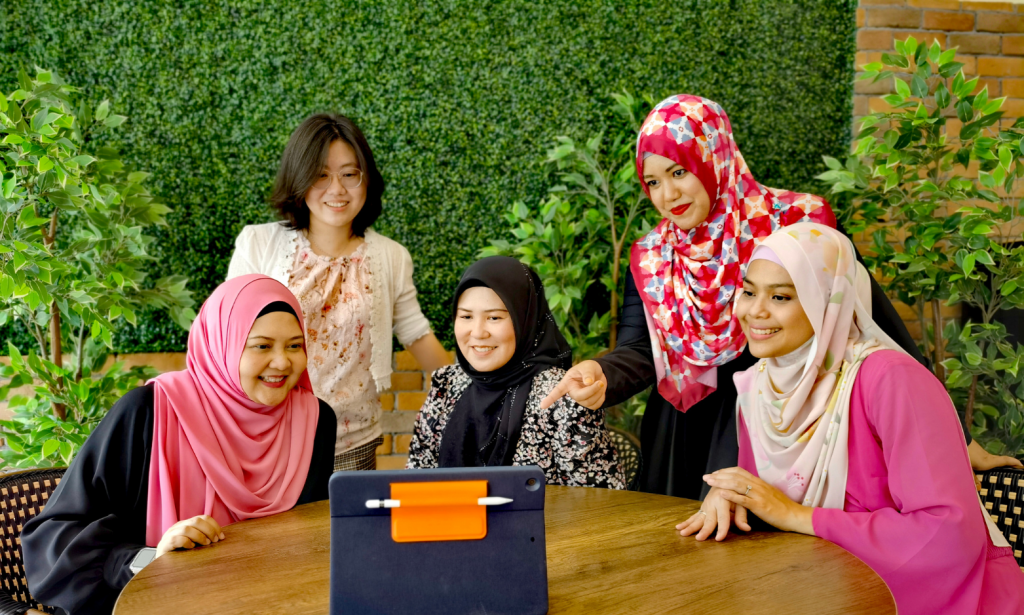Why Singapore’s English Teachers Should Embrace Singlish, Not Fight It
Is it time for Singaporean educators to embrace Singlish as a legitimate learning tool? What the Research […]
Read More
Designing a learning environment that can effectively accommodate the needs of different learners is a challenge that demands innovative strategies. At Boon Lay Secondary School (BLS), the Mathematics department embrace the transformative approach of Differentiated Instruction (DI) to tackle this challenge head-on. Through DI, they address their students’ unique needs, empower them through scaffolded tasks, and personalize their progress based on individual readiness. A group of teachers from BLS share with us how they do it.

At Boon Lay Secondary School (BLS), the teachers aspire to go beyond just equipping students with academic skills and knowledge; they also aim to cultivate students’ ability to learn through guided exploration and foster self-directed learning capabilities.
In addition to that, flexibility is another inherent characteristic of the BLS Mathematics department where teachers continually adjust and refine their teaching practices within the given time and curriculum constraints. This adaptability allows them to effectively address their students’ varied and evolving needs, thus fostering an engaging and dynamic learning environment in the Math classroom.
“Designing education around the average student fails to address the needs of all learners effectively,” shares Ms Haznita Jaafar, Senior Teacher/Mathematics. “By embracing Differentiated Instruction (DI), we are revolutionizing our classrooms into inclusive spaces where every student’s unique learning needs are catered for.”
Through personalized instruction, scaffolded tasks and an emphasis on self-directed learning, students are equipped with the skills and knowledge necessary to thrive in their own unique learning journeys.
Due to time constraints and other factors, some teachers tend to design learning environments based on what is recommended in textbooks. However, it is important to note that students should not be seen as one-dimensional; their learning dimensions typically vary greatly.
Defined as an approach to teaching and learning that acknowledges and embraces the diverse needs, strengths, weaknesses, interests and learning styles of individual students, DI involves tailoring instructions to meet the various needs of each learner.
According to Professor Carol Ann Tomlinson, a renowned thought leader in the education field, DI is a teacher’s response to learners’ needs, guided by the fundamental principles of differentiation. These principles include providing respectful tasks, implementing flexible grouping strategies, and continuously assessing and adjusting instruction based on student progress.
The core idea behind DI is to recognize that students possess inherent differences in their readiness, interests and learning profiles. It rejects the notion of designing education solely around the average student, as this approach fails to effectively address the needs of all learners.
“For the past 2.5 years, we have been dedicated to implementing DI, going through a process of unlearning, learning and relearning about this approach.”
–Haznita, on the team’s determination in implementing DI
In 2021, the Mathematics Head of Department (HOD) spearheaded a transformative department-wide journey towards implementing DI. “For the past 2.5 years, we have been dedicated to implementing DI, going through a process of unlearning, learning and relearning about this approach,” Haznita shares.
The first step taken by the department was to unanimously agree that Algebra was the most challenging topic to address. They recognized the need for a structured framework to guide their instruction, leading to the development of a worksheet template which ensures consistency in the learning experiences offered to all learners. To cater to the varying needs and abilities of students, three levels of questioning strategies were incorporated into the template.
Standardizing teaching resources based on the principles of DI was another crucial initial step in enabling differentiation in every lesson. However, the department encountered gaps and challenges along the way. To address these gaps, they attended the Differentiated Instruction Made Practical (DIMP) course offered by the Harvard Graduate School of Education.
The course is based on a four-step teacher decision-making framework which is a structured approach that empowers teachers to make precise and effective instructional decisions. Through this framework, teachers can remove guesswork from differentiation and ensure that adjustments align with measurable outcomes for their students.
BLS Senior Teacher/Computer Applications, Ms Azlina Muslimin highlights, “It requires teachers like us to embrace agile thinking, allowing us to be flexible, adaptable, and responsive in our approach to teaching.”
This framework helps teachers to make informed and deliberate instructional decisions, tailored to the unique needs of their students. It promotes a proactive and systematic approach to differentiation, ensuring that adjustments are aligned with student learning outcomes and contribute to their overall success.
“As the course equipped us with the necessary tools and knowledge to adopt a more facilitative approach to teaching, our students at BLS are now guided to solve questions using scaffolding, self-help tools, and dashboard signals that assist us in identifying areas where adjustments are needed,” Haznita adds.
In order to make DI sustainable and practical in every lesson, the Mathematics department has taken deliberate steps to integrate the Four-Step Teacher Decision-Making framework into their teaching resources and materials. “We use OSCAR, along with the SHOp adjustments to enhance the effectiveness of our DI approach and ensure a comprehensive learning experience for our students,” Mathematics Teacher Ms Nur Aida Md Khalid explains.
By integrating OSCAR into their resources, the department ensures that differentiation becomes an embedded and sustainable practice in every lesson. The clear lesson objectives, activation of prior knowledge, action-oriented tasks, clear criteria for success and reflection opportunities contribute to a comprehensive and effective DI approach. This approach promotes student engagement, autonomy and continuous growth, ultimately leading to improved learning outcomes for all students.
Dr Todd Rose, current CEO of Populace and former Professor and Director of the Laboratory for the Science of Individuality at Harvard, once said, “There is no such thing as an average student.” As students have jagged profiles and vary on many dimensions of learning, it raises the importance and relevance of transforming our classrooms using the DI approach.